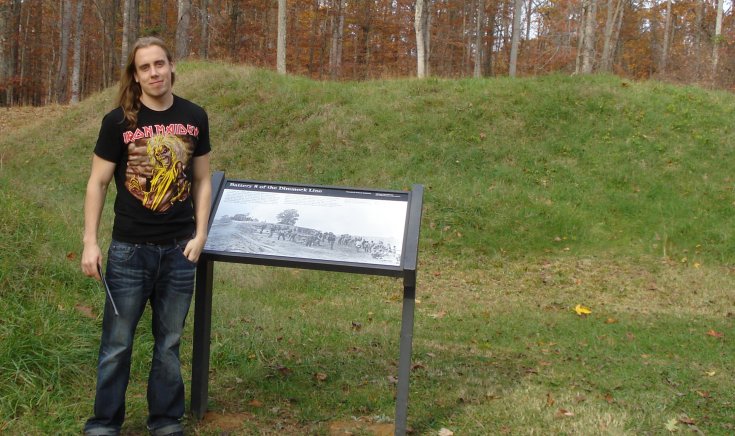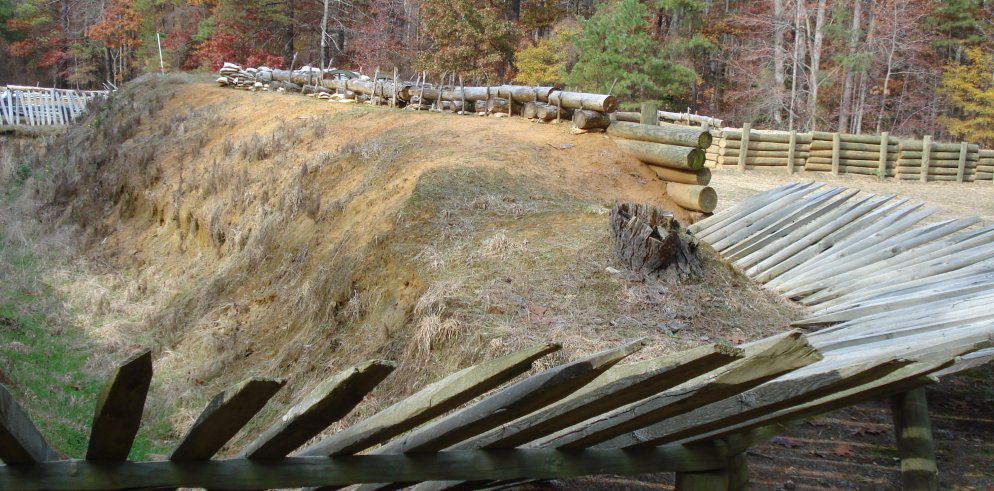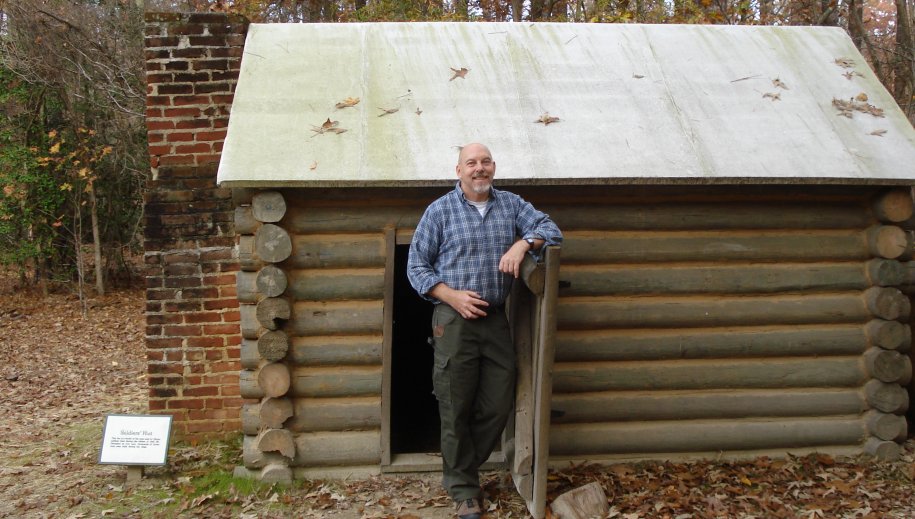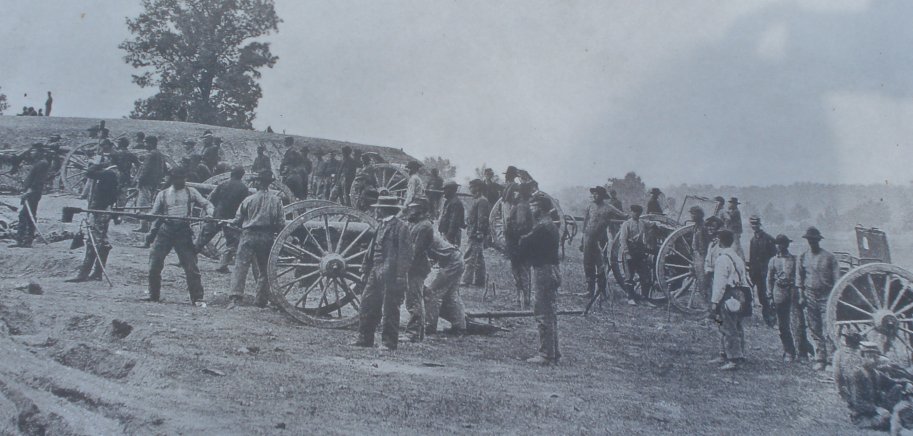Alex and I visited the battlefields associated with the Petersburg Campaign and Robert E. Lee’s final retreat. Petersburg gave the world a taste of what trench warfare would be like. You go from Federal earthworks to Confederate earthworks. As in the World War I, the armies were racing around the flanks. It soon became a grim slog, a war of attrition. The South could not win this kind of war. They just didn’t have enough men or materiel.

Above is Alex in front of some of the earthworks. Below is a reconstruction.

Lee was trying to escape to the west, where he could hook up with General Joe Johnston, while Union forces tried to bottle them up. Lincoln’s fear was that the war would go on and maybe turn into a guerrilla war. The Petersburg campaign has that endless war feeling anyway. They were regularly taking thousands of casualties each DAY. The soldiers were becoming more accustomed to war and much more cynical. They came to understand that the war in Virginia was ending and nobody wanted to be the last man killed. There is a good novel about this period called “Last Full Measure” that captures some of the feeling.

Above is a soldiers’ house. It looks like a playhouse, but it held four men. Below is what is left of the crater. Union miners from Pennsylvania made a tunnel under the Rebel positions and blew up Confederate fortifications. Unfortunately, the attack didn’t go well. Union troops poured into the crater and many were trapped there. It looks bigger in real life. You also need to remember that there has been almost 150 years of erosion and filling in.

America’s Civil War was remarkable in its ending. In France, terror followed revolution. The Russians and Chinese murdered millions of people in similar situations. In fact, protracted Civil Wars almost NEVER end without significant retribution and bloodletting. I think that I can safely say that the ending of the American Civil War was unique in human history. The victors were generous and the vanquished honorable. Because it happened as it did, we think of it as inevitable, but the decisions made in April 1865 were not foreordained.

Grant allowed Lee’s soldiers to keep their side arms and their horses. Robert E. Lee instructed his men to go home and become good citizens. Most did.

I know that some scholars talk about the “myth” of reconciliation and point to the problems that persisted. Some people still hold a grudge for Sherman’s march through Georgia and the Carolinas. You have to ask the “compared to what?” question. In most countries, more people die violently AFTER the wars. Not in America. Rebel leaders are usually executed. The lucky ones are only imprisoned or exiled. Not here. Can you imagine Cuba exiled welcomes back by the regime? Russian exiles lured back were usually murdered.
The Civil War was the worst war in American history. The destruction was horrendous. Yet after it ended … it ended. April 1865 was probably the most remarkable month in world history. This just doesn’t happen very often – or at all. I think we should take time to think about this. If others had learned from the Federal-Confederate example, we might have avoided most of the carnage of the 20th Century.

Above is a battlefield at Five Forks. When the fight turned into a battle of attrition, most of the engagements were small, but this was a key turning point. Phil Sheridan defeated troops under the unlucky George Pickett, who was off having a fish dinner and didn’t return until it was too late. The collapse of the Confederate position at Five Forks led directly to Lee’s decision to abandon Richmond & Petersburg. It was the beginning of the end for the Army of Northern Virginia and for the Southern Confederacy, and so Five Forks is sometimes called the Confederate Waterloo. There is nothing much to see here today. The trees and fields have grown back. It is hard to believe that war was ever close to this peaceful, bucolic place.
